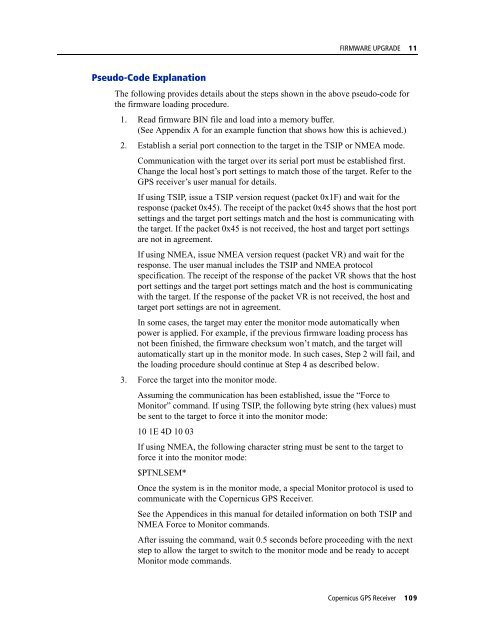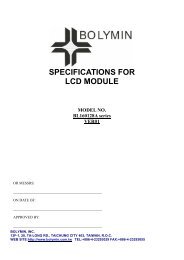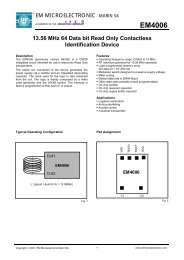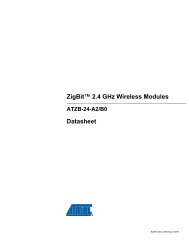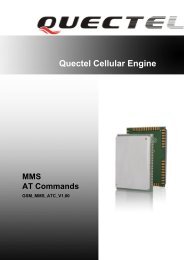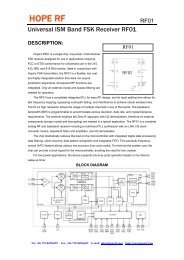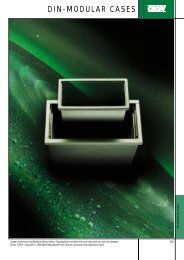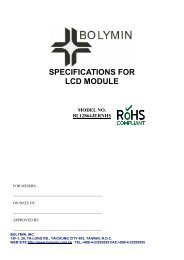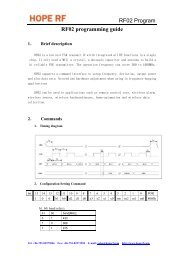REFERENCE MANUAL - FTP Directory Listing - Trimble
REFERENCE MANUAL - FTP Directory Listing - Trimble
REFERENCE MANUAL - FTP Directory Listing - Trimble
You also want an ePaper? Increase the reach of your titles
YUMPU automatically turns print PDFs into web optimized ePapers that Google loves.
FIRMWARE UPGRADE 11<br />
Pseudo-Code Explanation<br />
The following provides details about the steps shown in the above pseudo-code for<br />
the firmware loading procedure.<br />
1. Read firmware BIN file and load into a memory buffer.<br />
(See Appendix A for an example function that shows how this is achieved.)<br />
2. Establish a serial port connection to the target in the TSIP or NMEA mode.<br />
Communication with the target over its serial port must be established first.<br />
Change the local host’s port settings to match those of the target. Refer to the<br />
GPS receiver’s user manual for details.<br />
If using TSIP, issue a TSIP version request (packet 0x1F) and wait for the<br />
response (packet 0x45). The receipt of the packet 0x45 shows that the host port<br />
settings and the target port settings match and the host is communicating with<br />
the target. If the packet 0x45 is not received, the host and target port settings<br />
are not in agreement.<br />
If using NMEA, issue NMEA version request (packet VR) and wait for the<br />
response. The user manual includes the TSIP and NMEA protocol<br />
specification. The receipt of the response of the packet VR shows that the host<br />
port settings and the target port settings match and the host is communicating<br />
with the target. If the response of the packet VR is not received, the host and<br />
target port settings are not in agreement.<br />
In some cases, the target may enter the monitor mode automatically when<br />
power is applied. For example, if the previous firmware loading process has<br />
not been finished, the firmware checksum won’t match, and the target will<br />
automatically start up in the monitor mode. In such cases, Step 2 will fail, and<br />
the loading procedure should continue at Step 4 as described below.<br />
3. Force the target into the monitor mode.<br />
Assuming the communication has been established, issue the “Force to<br />
Monitor” command. If using TSIP, the following byte string (hex values) must<br />
be sent to the target to force it into the monitor mode:<br />
10 1E 4D 10 03<br />
If using NMEA, the following character string must be sent to the target to<br />
force it into the monitor mode:<br />
$PTNLSEM*<br />
Once the system is in the monitor mode, a special Monitor protocol is used to<br />
communicate with the Copernicus GPS Receiver.<br />
See the Appendices in this manual for detailed information on both TSIP and<br />
NMEA Force to Monitor commands.<br />
After issuing the command, wait 0.5 seconds before proceeding with the next<br />
step to allow the target to switch to the monitor mode and be ready to accept<br />
Monitor mode commands.<br />
Copernicus GPS Receiver 109


